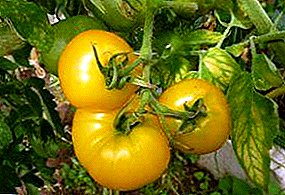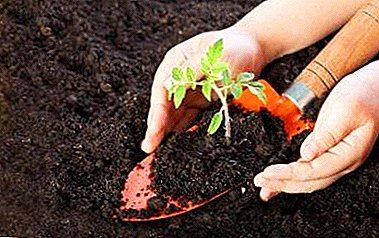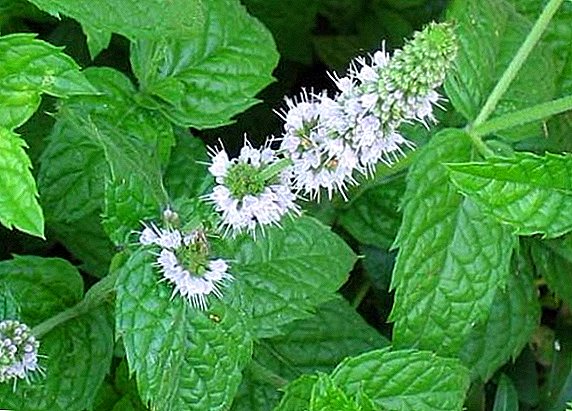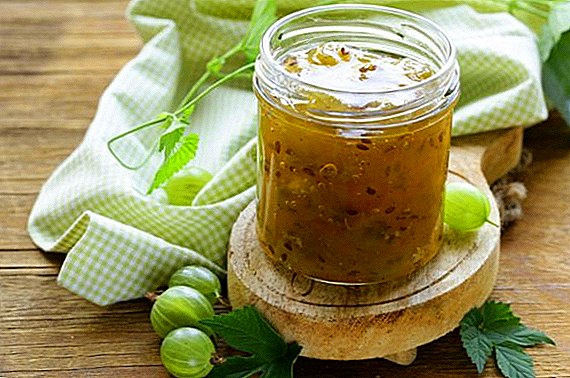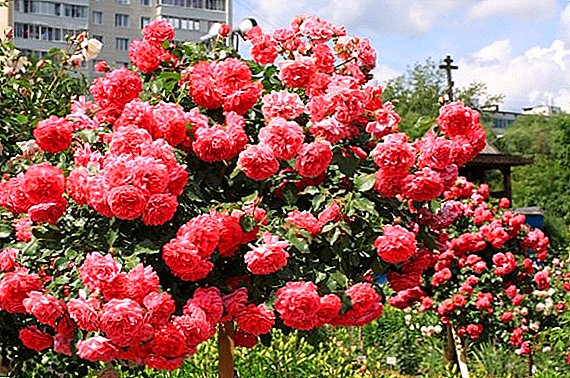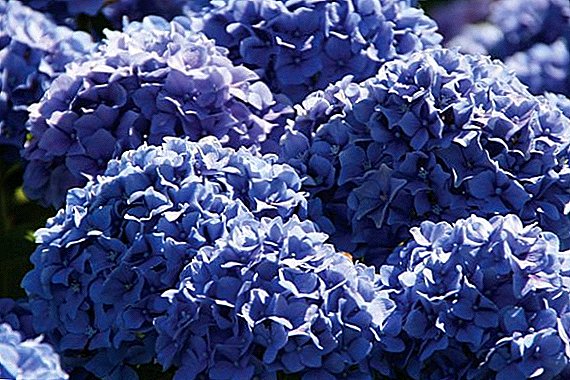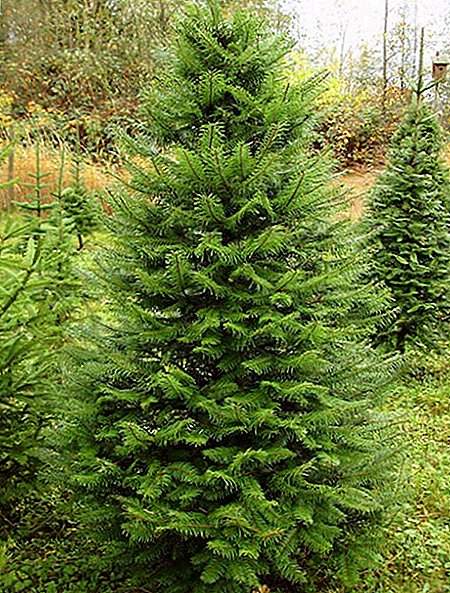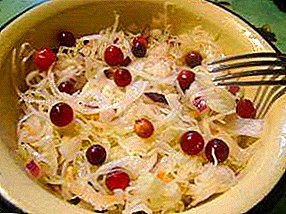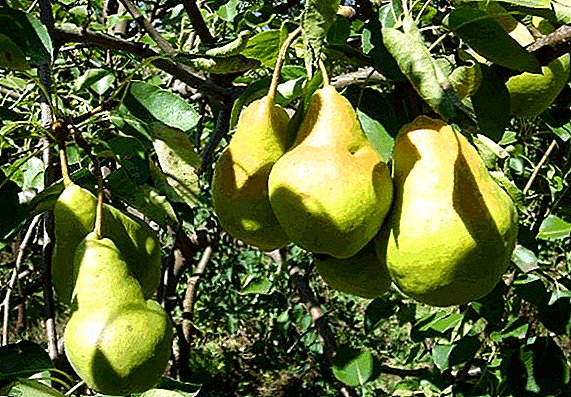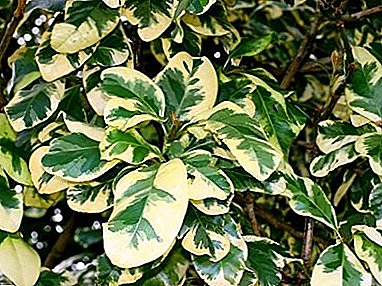
Pisonia - a popular houseplant.
Many people confuse it with a ficus because of the similar colored leaf coloring, but this is a mistake - this flower stronger branches, but at the same time it cannot reach such serious sizes as some types of rubber-bearing rubber plant.
The plant can be advised to a beginner florist, but there are several serious conditions that will need to be fulfilled to ensure optimal growth.
general description
Pisonia is evergreen dwelling in Australia, New Zealand, the island of Mauritius. Its name comes from the name of the scientist and naturalist from Holland V. Pizo.
In natural conditions occurs approximately 50 varieties This plant has an interesting feature - the fruit is covered with a special sticky substance to which insects and small birds can stick. Because of this, pyzonium is often referred to as "tree-fowling."
At home, the flower is best grown in closed greenhouses and winter gardens, as well as in halls or offices in an outdoor pot. The greatest dimensions - up to 1.8-2 meters in height and up to 1 meter diameter of the crown. It grows slowly - several new sheets may appear during the year, and it is extended by a height of 3-4 centimeters.
Photo
Pisonia: photo of a plant.



Kinds
The most common cultural species - umbrella umbrella. This is an evergreen plant that grows in nature up to 5 meters high.
The shoots are strongly branched, the leaves are oblong, with a smooth surface, up to 25-20 centimeters in length, of a uniform green color. The edge is wavy.

Popular pot variant is varijone pisonia. It has a more compact size (up to 1 meter), as well as variegated leaf color.
Young plants have irregular-shaped patches of dark pink color on dark green plates, which become white or yellow with age.

Home care
Pisonia care: at home. Plant maintenance is not difficult, but for the best development and preservation of the brightness of the pattern on the leaves some rules need to be followed.
Care after purchase
When choosing a plant in the store you need it inspect carefully and make sure there are no pests. Particular attention should be paid to the back of the leaves.
In the lower part of the trunk should not be white or gray plaque, and the substrate itself should not emit an unpleasant putrid odor.
If the purchase occurs in the winter, you definitely need to take care of the protection of pyzonium from cold air. To do this, fit paper or newspapers, in which the pot is wrapped entirely, or a thermo bag.
Watering
 In spring and summer produced in moderation - it is very important to ensure that before the next stage the soil in the pot dries out at the top by one third.
In spring and summer produced in moderation - it is very important to ensure that before the next stage the soil in the pot dries out at the top by one third.
In winter time watering is reduced, especially if the plant is kept in a cool room, and is carried out once every 8-12 days.
If the leaves become sluggish, then the period between treatments is slightly reduced. In the case of overflow, the soil begins to turn sour, causing the root system to quickly rot. For irrigation you need to use well-settled water without chlorine.
Bloom
May bloom small buds. White, yellow or pink, tubular flowers with a sweet smell.
In terms of the room almost does not bloom, but in the greenhouses, the process occurs with old plants. Sometimes there are long sticky pods.
Crown formation
Pisonia grows very slowly, and therefore does not need formative pruning.
but to speed up branching You can pinch the tops of the plants and branches.
Soil
A general purpose soil is suitable for pyzonium - fertile, air-permeable and permeable. You can prepare the substrate yourself, for this mix 1 part of peat, coarse sand and leafy earth.
Experienced growers recommend add a handful of chopped pine bark to the mixture. The optimum level of acidity is slightly acid (5.0-6.0) or neutral (6.0-7.0).
Planting and transplanting
The root system of a young plant is developing very actively, and therefore its best transplanted every year in early spring. A new pot in diameter should be 2-3 centimeters more than the current one. The longest roots can be shortened to a third of the length or even half.
As soon as the plant reaches 4-5 years of age, the frequency of transplantation decreases to 1 time in 2-3 years.
Breeding
 The main method of reproduction in puzonia - rooting of cut semi-woody cuttingswhich prepare in the spring, during the next transplant of a plant.
The main method of reproduction in puzonia - rooting of cut semi-woody cuttingswhich prepare in the spring, during the next transplant of a plant.
Apical cuttings are used to obtain beautiful flowers, but they are demanding of favorable conditions for growth. Cuttings from the middle part of the trunk are less susceptible to temperature changes and better rooted.
Shoots stuck into the soil, mixed from wet peat and sand. For rooting containers best covered with a plastic bagand to ensure the temperature of the soil at least 21-22 degrees.
Under the right conditions, the roots will appear after 3 weeks, after which the young plants are transplanted into pots filled with standard soil. From this point on, care is no different from looking after an adult plant.
Seed multiplication at home is not applicable.
Temperature
Pisonia - heat-loving plantand feels best at room temperature + 20-22 degrees. It is advisable not to keep the flower in a higher temperature environment, but if this happens it is necessary to ensure regular spraying and high humidity.
In winter, you need to make sure that the temperature in the room does not fall below +18 degrees.
The plant is afraid of drafts - you can not allow the flower to fall into the cold air.
Benefit and harm
The plant is not poisonous, and at the same time does not possess any special air purification properties.
Scientific name
Latin name umbrella umbrella - Pisonia umbellifera, pyonium variegata - Pisonia umbellifera variegata.
Diseases and pests
 The flower is affected by standard pests of indoor plants. Most common spider mite, which promotes dry warm air. The main symptom of infection is a change in the color of the leaf spots on a gray-brown.
The flower is affected by standard pests of indoor plants. Most common spider mite, which promotes dry warm air. The main symptom of infection is a change in the color of the leaf spots on a gray-brown.
If there is no cobweb yet, then at this stage you can simply wash the pest away with a sponge and plenty of water, otherwise you will have to treat it with insecticides.
The appearance on the leaves of brown convex plaques is a sign of the appearance scythe. First you need to isolate the flower from others, then gently wash all the leaves with a soapy sponge. Then the plant is sprayed with chemicals.
If the leaves begin to turn yellow around the edges and lose color - This is a sign of sunburn by direct rays. It is necessary to rearrange the pot in partial shade, or to provide protection from midday heat.
Shredding leaf size and loss of variegated color is a consequence of the lack of lighting. In this case, the plant is rearranged closer to the window, but not under direct sunlight.
Conclusion
Pisonia is an evergreen plant from Australia and Oceania. At home, two types are grown - umbrella and variegata. The latter is often mistaken for a ficus due to a similar leaf color.
The plant does not require special conditions, the main thing is not to expose it to direct sunlight and not to allow acidification of the soil. The main method of reproduction - cuttings.


